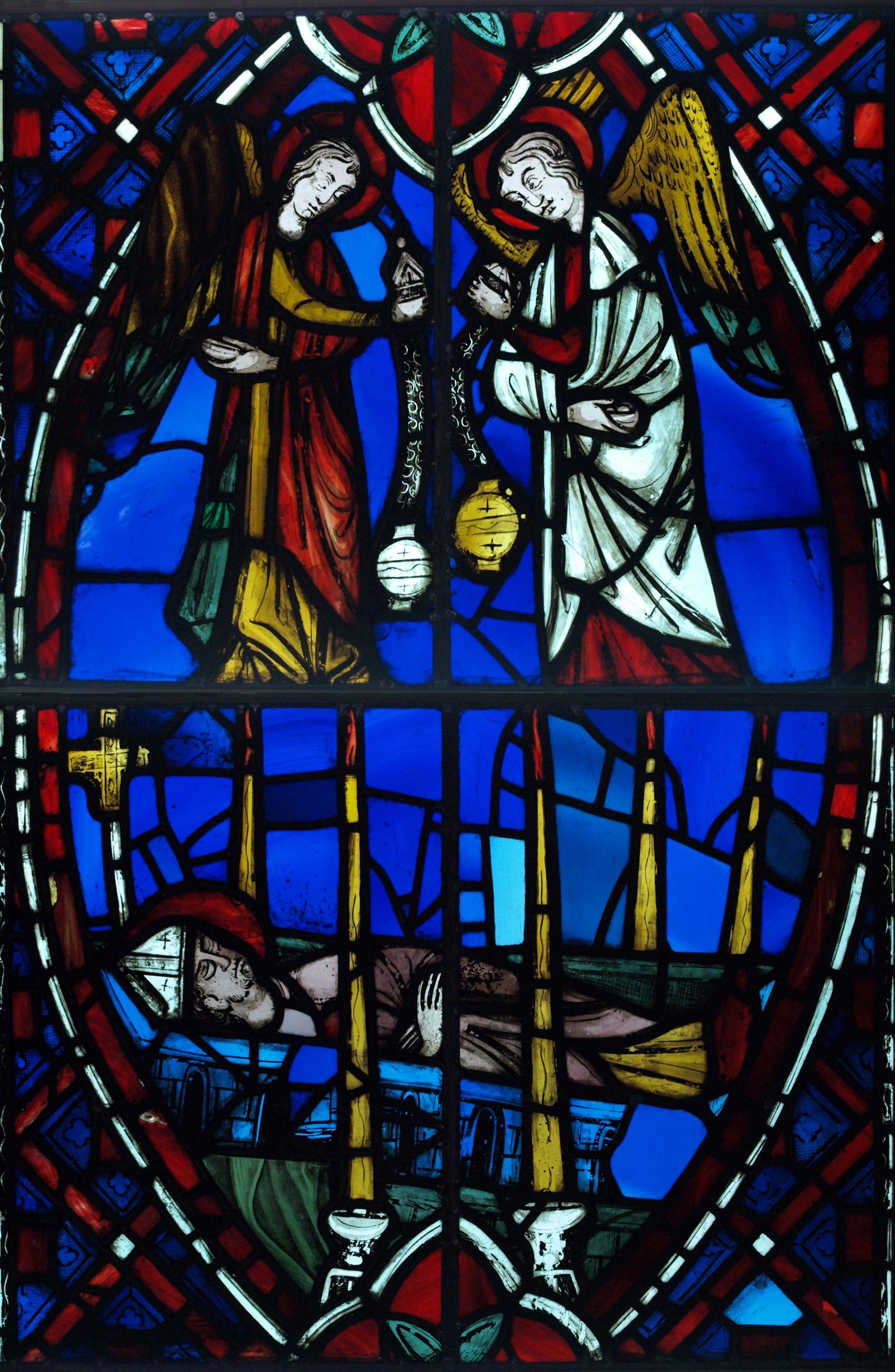
The Death of St Germain, c. 1243–48 [G19]
Paris
These panels once formed part of a window in the Lady Chapel of Saint Germain-des-Prés, a Benedictine abbey in Paris. The chapel was built c. 1243–48 and its windows decorated with scenes from the lives of the Virgin Mary, St Vincent of Saragossa and St Germain (c. 496–576), Bishop of Paris during the reign of Childebert I. Following the French Revolution, the monastery was closed and its stained glass windows were sold. In 1802 the Lady Chapel was demolished.
The graceful figures and bright colours of this window are typical of early Gothic stained glass. Most of the colours were created by adding metallic oxides to the molten glass. This type of glass is known as ‘pot metal’. Red glass, however, cannot be made using this method because it becomes too dark for light to pass through. Instead, the glassmaker ‘flashed’ thin layers of red glass over a thicker piece of clear glass. Pale streaks can be seen where the flashed glass is not of uniform thickness. After cooling, the pieces of coloured glass were cut to shape and held in place by strips of lead. Details such as the faces of figures, and folds of drapery, are painted on with a fine brush.
Literature: Louis Grodecki, ‘Stained Glass Windows of St.-Germain-des-Prés’, The Connoisseur, cxl (1957), pp. 33–37; Mary B. Shepard, ‘French Thirteenth-Century Stained Glass from St. Germain-des-Prés at Winchester College’, The Journal of Stained Glass, vol. 18, no. 2 (1986–87), pp. 115–23; Mary B. Shepard, ‘The St. Germain Windows from the Thirteenth-century Lady Chapel at Saint-Germain-des-Prés’, in Elizabeth C. Parker (ed.) with the assistance of Mary B. Shepard, The Cloisters: Studies in Honor of the Fiftieth Anniversary (New York, 1992) pp. 282–301, 295–96, 299; Sara Dick-Read, ‘Another Time, Another Place, Two Angels for Christmas‘, Hampshire Magazine (December 2003), 24-26; Roger Rosewell and Mary B. Shepard, ‘The Stained Glass of Saint-Germain-des-Prés‘, Vidimus, 21 (September, 2008); Sarah Griffin and Eleanor Townsend, Medieval Stained Glass at Winchester College (2021), pp. 3-4, 15-16.
Provenance: Given to the College by Sir Bruce Ingram, 1949
Location: Treasury, Gallery 1